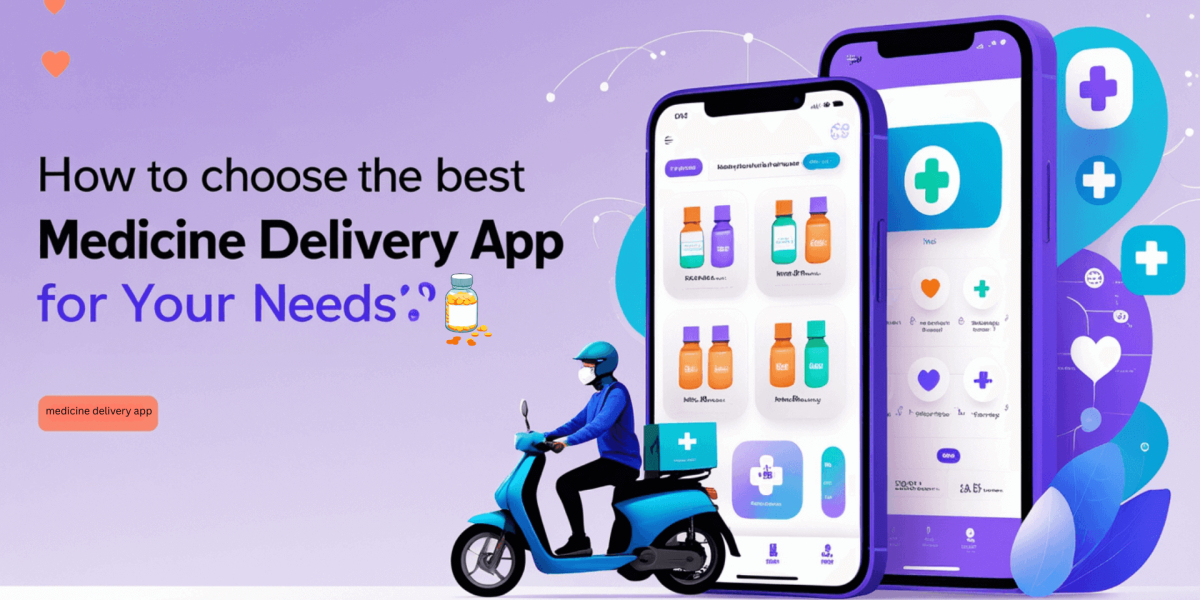How React Native Speeds Up Cross-Platform App Development
- By Vipin Maru
- 22-05-2025
- Mobile App Development

Introduction
Being fast and efficient has become a requirement for success in the fast-paced mobile app development world. Going forward in 2025, using different platforms together is central to the way digital strategies are done. Many businesses and developers are relying on tools that let them develop applications once and make them work everywhere, cutting back on costs, time, and resources.
React Native is a framework from Meta (formerly Facebook) that helps you write code once and use it for both iOS and Android apps. Ever since it was introduced in 2015, React Native has attracted a huge following and is a fond favorite among developers. At the time of writing, almost 38% of developers from around the world use React Native to make mobile applications, as found in the Stack Overflow Developer Survey.
Why the surge? These days, building on the web means you can go from idea to production much quicker, create products that feel like apps, and do it at a much lower price, all important advantages for a world filled with rapid digital advancements.
Here, we look at how React Native makes cross-platform development faster and more efficient, as well as explain why it’s the choice of most developers in 2025.
What is React Native?
In 2015, Facebook developed React Native, an open-source framework used to build mobile apps. AngularJS began with a Google hackathon project in 2013, offering developers around the globe a simple but striking way to design mobile apps using JavaScript.Mobile development wasn’t as unified at that time because developers had to handle separate coding projects for iOS and Android. The introduction of React Native allowed users to create mobile apps differently.
It was designed to help make it easier and quicker to create apps for many platforms with just one piece of code. At one time, developing apps for iOS and Android together required rewriting the same code which added both time and expenses to app development. React Native successfully solved this problem.
React, Facebook’s tool for making user interfaces, is the structural base for the framework. Instead of being a web app, React Native developers series of native components, giving apps the exact feel and look of regular mobile apps.
Component-based architecture gives React the ability to simplify the making of UI that adapts automatically. The components feature enhances a developer’s ability to move small pieces of the interface from one screen to another.
Basically, React Native works by connecting JavaScript to native APIs, which permits creating most of the code in JavaScript while still reaching the main features of the platform. Thanks to using JavaScript and native modules, the framework is extremely useful and can adapt to different situations.
React Native works on iOS and Android, the two mobile operating systems that rule over 99% of the world. With help from third-party libraries and the community, React Native is becoming well-suited to support web and desktop systems, making it a top choice in the field of cross-platform development.
It’s more than a set of guidelines; Flutter is a shift that’s changing app building in 2025.
How React Native Accelerates Development
Being able to build apps very quickly is one of the main reasons why all tech teams value React Native in the market of today. It isn’t only about speeding up the app development process. It refers to achieving the same high standards without affecting the product’s quality.
1. A Codebase that works for iOS and Android
With React Native, you can create a single set of code that works for both iOS and Android apps. As a result, development happens more quickly, there are fewer errors, and all versions are very similar. Businesses can reduce the effort and time spent on development, up to 40%, by merging two code repositories into one, as proven by developer studies.
Moreover, having just one set of codes reduces frustrations while debugging, makes testing more efficient and maintains the same features on every platform. This improves the process for agile teams that aim to release often or use continuous integration.
2. Hot Reloading & Fast Refresh
Hot Reloading and Fast Refresh allow developers to instantly notice code changes inside the app without having to restart the entire thing. Using this way of working saves time and encourages people to test their ideas quickly, leading to better and quicker development.
Because of these features, the development process takes less time. Developers have the option to quickly adjust the tiniest detail in the app and immediately observe any changes in real time.
3. Pre-Built Components & Third-Party Plugins
With React Native, you get many pre-built UI tools that allow you to create commonly needed forms, arrangements for navigation, or other animations faster. Also, because of the large number of third-party libraries and plugins, you can find solutions already made instead of building everything from scratch. No matter whether you need maps, payment gateways, or sensor data, you can probably find a compatible plugin.
Because of its large collection of plugins, it reduces the time needed to market a product. You can quickly add features such as notifications, video viewing, analytic tools and login through social media accounts by changing only a few lines in the configuration, rather than losing any features developers rely on.
4. Live Reloading & Faster Testing
Since Live Reload is part of React Native, updates on the screen happen as soon as you code them, making it easy to test and find errors. It becomes necessary when releasing updated versions or minimal viable products in the market.
With Live Reload, developers are able to quickly notice problems with the page’s layout, reliability and UI while making changes. When used with Jest or Detox, it allows for swift QA and uncomplicated releases.
5. Developer-Friendly Ecosystem
Developers use JavaScript and React in building React Native applications, thanks to its easy-to-use and modern interface. Having Expo, ESLint, and Visual Studio Code in the mix means that React Native is very convenient for developers.
In addition, developers have access to a big community, plenty of written guides and lively forums. That leads to fewer challenges and simple solutions, so people are able to begin work faster. Managing a small project or one that expands to a large audience, you have all the resources you need to grow efficiently.
To sum up, React Native is optimized for maximum speed during every part of development.
Benefits for Businesses
Reaction, or React, helps developers code-fast and win time—and that makes money, too.It is very useful for businesses to use React Native for building mobile apps in the fastest and best way to remain ahead of others in today’s market.
Reduced Development Cost & Time-to-Market
Creating iOS and Android apps at the same time can allow companies to reduce costs by approximately half.By opting for React Native developers, businesses do away with hiring different teams for each platform and make the product work on all of them once. When brand owners focus on a few major players, they have less staff, face lower costs and can swiftly enter the market with their goods in response to new market opportunities. Furthermore, when companies can deliver their services and products to customers faster, they can take advantage of new opportunities, attract more customers and make more money.
In turn, this helps brands launch their products quicker, so they can keep up with changing trends and what customers want.
Faster MVP Creation & Iteration
Building and testing an MVP as quickly as possible is very important for startups and established enterprises. React Native allows companies to create prototypes fast so they can quickly test and gather opinions from users. Because it is robust, teams are able to quickly update and test the app using practical data.
Easy Maintenance & Updates
By using React Native, you can easily push out updates to all your applications at the same time. CodePush can be used to release code changes wirelessly, so you can avoid delays by waiting for the approval of app stores.
Scalable Architecture
As your app increases in size, its performance remains high due to React Native. Because of its modular architecture and easy-to-use integration tools, businesses can create apps that launch quickly and are easy to grow and maintain.
All in all, React Native is more than a development tool; it truly helps companies rapidly grow their businesses.
Real-World Examples
In addition to being favored by indie developers, React Native is behind many of the apps that huge numbers of people use daily. Some of the biggest companies in the tech and retail sectors have chosen to use Flutter to ensure their applications are fast and work on all platforms.
Facebook & Instagram
Being created by Facebook, React Native is frequently used inside the company. Facebook added it to the main app for faster access to Events, and Instagram put it to use in their post-cover feature after copying 85% of the code from iOS to Android.
Discord
The gaming app called Discord is built using React Native so that the experience is the same everywhere. As a result, their impeccable user experience can be achieved more rapidly as their app is updated regularly.
Walmart
Walmart decided to build parts of its mobile application with React Native in order to improve performance and share code across platforms. Because of this, the team could use 96% of the codebase across the platforms, making development and QA much more efficient.
Bloomberg
The company relied on React Native to create a new look for its mobile app and provide up-to-date information for users. Bloomberg was then able to speed up development and enhance how well the app ran on both iOS and Android using React Native. Since the framework divided the app into modules, Bloomberg’s development team was able to release new functions while retaining the same appearance on all platforms.
Shopify
Store managers operating on their phones benefited from Shopify adopting React Native. Shopify was able to speed up the addition of new features, provide effortless updates and run at high performance on both iOS and Android. Thanks to this, Shopify developed an efficient app that provides support to thousands of merchants globally, allowing them to manage their orders, watch their sales and communicate with customers instantly.
These examples show that with React Native, businesses can easily grow, keep up with trends, and get their products out faster, whether they are big or small.
When to Choose React Native
With insufficient time and funds to develop a project, choosing React Native can help you offer software on both iPhone and Android devices. If your project is an MVP, an eCommerce platform, a social network or a business tool, it’s best to use it, since sharing a codebase saves you both time and effort. It allows businesses to check their ideas more rapidly by using the same code across different platforms with the same quality.
If you need a fast way to build an app that can be simple to update and maintain, React Native is your best option. One of its biggest strengths is allowing a single JavaScript file to power the app the same way on all platforms which is very important for some applications.
Moreover, thanks to all the libraries and community support, it’s simple to set up features like push notifications, payments or location services.
Apps with complex 3D graphics, animated sequences or heavy use of Kotlin might develop their programs using only Kotlin. In situations where the software must handle heavy tasks, frameworks designed for the native platform usually allow for better use of hardware, provide peak speed and ensure smoother graphics.
If you want to complete the job swiftly, save budget and support large user bases, consider using React Native.
Conclusion
In 2025, being agile is key, and React Native leads the way on cross-platform development. Because of its one shared codebase, hot reloading, and friendly development tools, creating an app takes less time and maintains a high level of quality and performance.
Both big tech firms and major brands like Walmart have adopted React Native, showing how flexible and solid it is in the real world. It allows teams to get products to market fast, make frequent updates, and manage applications at low cost.
Even though some complicated uses might call for something else, React Native is still a smart choice for most modern apps.
If you want to make great apps quickly and at a reasonable cost, working with a trustworthy React Native App Development Company in India will help you succeed in today’s fast-changing digital environment.


.jpg)


